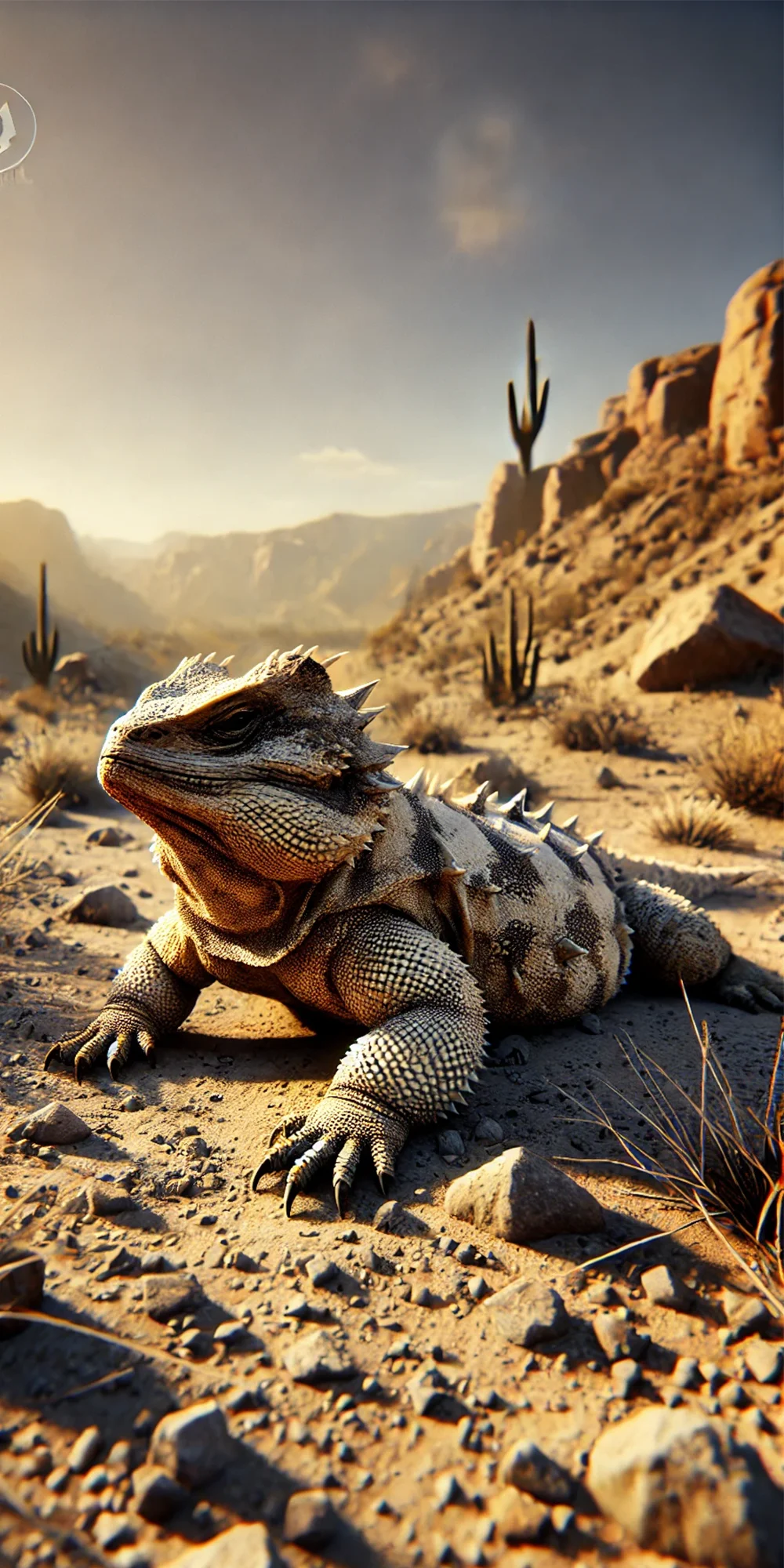The Desert Horned Lizard
The Desert Horned Lizard, also known as "horny toad," is a small reptile found in the deserts of North America. They are known for their unique spiked appearance, with a flattened body and distinctive horns on their head. Their coloration can range from tan to gray, allowing them to blend in seamlessly with their sandy surroundings. These lizards are primarily insectivores, preying on ants, beetles, and other small insects. They are also able to inflate their bodies to appear larger when threatened, and their camouflage and spikes help protect them from predators.

| Desert Horned Lizard | |
|---|---|
| Size | Approximately 3 to 5 inches (7.6 to 12.7 cm) |
| Weight | Approximately 1 to 3 ounces (28 to 85 grams) |
| Speed | 4-5mph (6.4-8km/h) |
| Key Strength | Camouflage and defense mechanisms |
| Biggest Weakness | Small size and reliance on camouflage |
| Scientific Name | Phrynosoma platyrhinos |
| Family | Phrynosomatidae |
| Habitat | Desert regions with sandy or rocky terrain |
| Geography | North America, specifically southwestern United States and northern Mexico |
| Diet | Insects, primarily ants |
| Lifespan | 6 years - 8 years |

The Desert Horned Lizard
The Desert Horned Lizard, also known as "horny toad," is a small reptile found in the deserts of North America. They are known for their unique spiked appearance, with a flattened body and distinctive horns on their head. Their coloration can range from tan to gray, allowing them to blend in seamlessly with their sandy surroundings. These lizards are primarily insectivores, preying on ants, beetles, and other small insects. They are also able to inflate their bodies to appear larger when threatened, and their camouflage and spikes help protect them from predators.
Fun Fact: The Desert Horned Lizard has the ability to shoot blood from its eyes as a defense mechanism against predators.
| Desert Horned Lizard | |
|---|---|
| Size | Approximately 3 to 5 inches (7.6 to 12.7 cm) |
| Weight | Approximately 1 to 3 ounces (28 to 85 grams) |
| Speed | 4-5mph (6.4-8km/h) |
| Key Strength | Camouflage and defense mechanisms |
| Biggest Weakness | Small size and reliance on camouflage |
| Scientific Name | Phrynosoma platyrhinos |
| Family | Phrynosomatidae |
| Habitat | Desert regions with sandy or rocky terrain |
| Geography | North America, specifically southwestern United States and northern Mexico |
| Diet | Insects, primarily ants |
| Lifespan | 6 years - 8 years |
Desert Horned Lizard Matchups
We use AI to simulate matchups between the Desert Horned Lizard and other animals. Our simulation considers size, strength, and natural predatory behaviors to determine the most likely outcome.
Desert Horned Lizard: Diet, Predators, Aggression, and Defensive Behaviors
What do Desert Horned Lizards eat?
Desert Horned Lizards primarily feed on ants and other small insects. Their diet also includes spiders, beetles, and worms. They are known to be sit-and-wait predators, patiently stalking their prey before launching a quick attack.
Do Desert Horned Lizards have any predators?
Yes, Desert Horned Lizards have several predators in their habitat, including birds of prey, snakes, and mammals such as foxes and coyotes. These predators hunt the lizards for food, making them vulnerable to predation.
Are Desert Horned Lizards aggressive?
Desert Horned Lizards are not typically aggressive towards humans or other animals. They are known for their calm and docile behavior, often trying to avoid confrontation by blending into their surroundings or fleeing when threatened.
Do Desert Horned Lizards fight?
While Desert Horned Lizards may engage in territorial disputes with other lizards, they are not known to engage in physical fights. Instead, they may display aggressive postures, such as inflating their bodies or revealing their sharp spikes, to deter potential threats.
How do Desert Horned Lizards defend themselves?
Desert Horned Lizards have a unique defense mechanism that involves squirting blood from their eyes when threatened. This physiological response, known as autohemorrhage, startles predators and gives the lizards a chance to escape. In addition to this, their spiky appearance also acts as a deterrent to predators.
What is the Desert Horned Lizard's biggest weakness in a fight?
Despite their impressive defense mechanisms, Desert Horned Lizards are relatively small and may struggle to defend themselves against larger predators such as birds of prey or snakes. Their primary strategy is to rely on camouflage and quick escape rather than direct confrontation in a fight.
Fun Fact: Despite their name, Desert Horned Lizards are not actually toads and are more closely related to iguanas and other lizards.
Fun Fact: During the breeding season, male Desert Horned Lizards engage in elaborate displays to attract females, including head-bobbing and push-ups.










